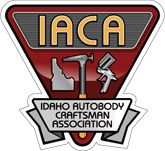What if I want to keep it?
You have the right to retain ownership of the vehicle, but the amount of the settlement may be reduced by the salvage value.
What will happen to the vehicle?
The insurance company will sell it to the highest bidder, who will either dismantle it for parts or re-sell it after repairing it.
Is the ACV negotiable?
Sometimes. If you fell the ACV offered by the insurance company is too low, then you are obligated to prove this either through documented receipts of vehicle enhancement or written statements by qualified experts to determine the proper value.
How is the actual cash value determined?
The insurance company will assign an appraiser to inspect the vehicle to determine its condition prior to the accident, or in some instances allow the repairer to make the determination. They may use a car evaluation service or the newspaper to determine the value independently.
The insurance company says my car is a total loss. What does that mean?
The value of the vehicle – the sum of the cost of repairs plus the value of the vehicle in damaged condition (salvage value) – is greater than the actual cash value (ACV) of the vehicle prior to the accident.
What is subrogation?
Subrogation is the process by which your insurance company pays for the repairs to your vehicle, and is obligated to collect from another insurer or party. Your collision coverage will require you to pay your deductible, which may be refunded once the other party pays.
Will the shop refund money if the parts specified on the estimate are not used?
Yes. It is unacceptable for a shop to charge for parts no actually installed on the vehicle. The final repair order must be corrected to detail all of the parts actually used and labor operations actually performed.
Will the shop refund money if the actual repair times do not take as long as estimated?
Generally not. Estimates are prepared using information supplied by independent repair information companies. They are not intended to be an exact representation of the time necessary to complete repairs, only the average and suggested cost to perform those repairs.
What is the difference between the estimate and the repair order?
The dictionary defines an estimate as “a rough or approximate calculation only.” The insurance company may provide an estimate; however, it is up to the repair facility to discuss the repairs and provide the estimate to the owner for approval and authorization. Often it is initially impossible to estimate collision damage without dismantling the vehicle. The repair order is an actual blueprint of the repairs done to the vehicle listing the parts, their origin, the labor operations, and other relevant items. It can only be finalized upon the completion of repairs.
Do I need more than one estimate?
Only if you want to discuss the repairs with more than one shop. If you have selected a shop, have your insurance company deal directly with them, with notice to you.
Who is responsible for the quality of repairs?
The shop you choose is responsible for the quality of repairs. As the insured, you are responsible for paying for those repairs. The insurer is responsible for reimbursing you to the limits of you policy. This is why it is important that you choose your insurer, as well as repair facility, carefully.
Can the shop help bury my deductible?
No. When you purchased your insurance policy, you signed a contract saying you will pay the first amount of the claim up to your deductible. Repairers should not be asked to hide the deductible. That practice would constitute fraud by both the shop and the consumer.
Who are the claimants and insured?
You are the insured when your policy is paying to repair your vehicle. Your deductible will usually apply. You are the claimant when someone else’s insurance is paying your claim. You should not pay a deductible, and may be eligible for personal injuries to you and your occupant(s), and loss of use or rental reimbursement while your vehicle is being repaired.
What ARE collision, comprehensive AND liability coverage?
Insurance policies are contracts designed to protect people in one of three ways – liability, collision, and comprehensive. All states require the vehicle owner to carry some form of liability coverage. This type of coverage pays for damages you may do to someone else or their property. It does not cover damage to your property. You may purchase optional forms of coverage, such as collision or comprehensive, to protect yourself and your property. Collision coverage will repair or replace your covered vehicle in the event it is damaged in an accident, even if the accident is your fault. Comprehensive coverage covers perils such as fire, theft, and vandalism. Both collision and comprehensive coverage typically require the owner to pay the first portion of the claim, called the deductible.
